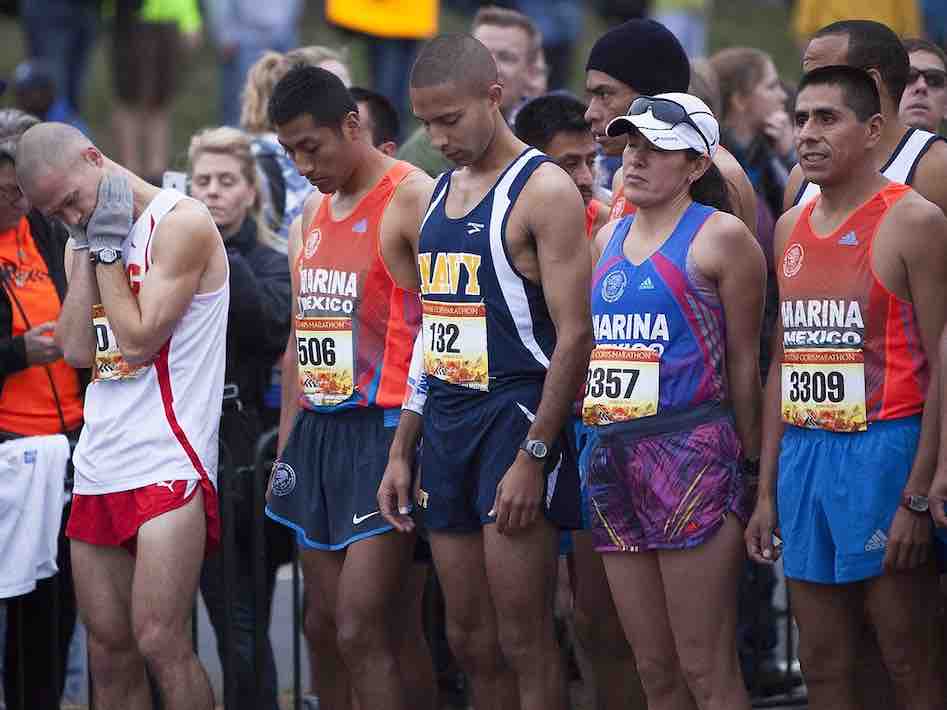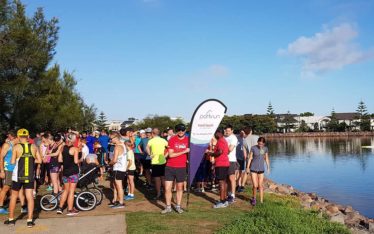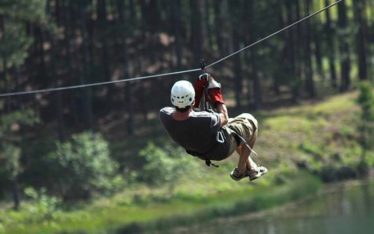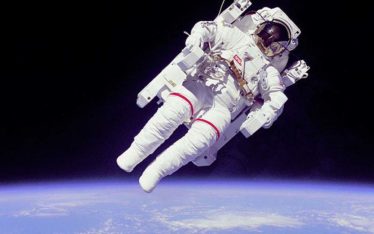Running a marathon is an ultimate goal for many runners whether you are an elite runner or a weekend warrior. You’ve followed a semi-rigid training and nutrition plan, including the Sunday long runs. You now arrive at the start line fresh and ready (if a little nervous) to make your best attempt at a lifetime goal.
Race day though is a funny thing. Months of preparation builds pressure to perform and you wait on the start line with anticipation of what is likely to unfold. The following article breaks down the marathon into 5 simple sections from when the gun goes off till you cross the line. It is designed to assist, excite or perhaps frighten the living daylights out of you.
Now full disclosure, I’m not a professional runner nor a qualified coach. I’m only sharing my experience having run in over 15 events of 42.2km or more. If you are reading this and heading into your first marathon or recently completed your first marathon, I’d be interested to hear in the comments how accurate it was for you.
Part I: 0-10km
The gun goes off! All nerves leading up to this point seem to drop away immediately. You no longer have any nagging questions, you no longer have a choice, you now just have 42.2 kilometres in front of you and no one else can help you. You start getting into stride trying to avoid bumping into other runners in a likely congested starting kilometre. You feel good, amazing actually. You’re healthy and fit (or ought to be!) and you have a nice surge of adrenaline going on. Your first few kilometres may, in fact, be your fastest the entire race.
It is crucial to monitor your first few kilometre time splits so you don’t go out too fast too soon. There is logic in having a few minutes in the bank for later, but it is best to stick to a set pace for the first ten kilometres so it doesn’t come back to haunt you. Easier said than done though. Ignore other runners, who may seem to be passing you, everyone is finding their rhythm right now so just focus on what is comfortable for you.
Don’t be alarmed if you feel any niggles or pains. These are likely to surface early but most will iron themselves out in the first 10km. Don’t wear anything new on race day to avoid blisters or chafing. All you have done on the Sunday long runs should be your same race day routine, albeit fewer crowds. Take a drink at each aid station even if it is to take a swig and spit it out. The routine of the aid stations is a good distraction and these will soon become the glimmer of light at the end of a dark and miserable tunnel.
“When you run a marathon, you run not against the other runners or the time, you run against the distance”. – Haile Gebrselassie
Part II: 10-20km
Ten kilometres into the marathon and any niggles will have ironed themselves out with only major injuries left to worry about! You should be in a good rhythm by now and the first ten kilometres will feel as though they have flown by. You should have a good sweat up and be breathing steadily rather than gasping for breath.
Coming up to 21km and the half-way mark you may wish to begin checking the clock and use it to calculate your likely finish time. To be frank, your brain is not required for the first 20km. Just let your legs roll over at a pace they are comfortable with and switch your brain to autopilot. Your mind should treat the first half of the marathon as though it’s watching a cricket match and just popping into the living room occasionally to check out the score. Otherwise, it should just take in the scenery, absorb the cheering crowds and let the body get on with what it’s been trained to do. The brain will be needed later for serious negotiations with a screaming and outraged body.
Aim to do the first half slower than the second half, it’s a good idea to not race to halfway hoping to simply double the time to get your target finish time. As they say in investing, past performance is no predictor of future performance! Each kilometre of the marathon is earnt and will serve up its own individual battle to get through.
If you want to run, run a mile. If you want to experience a different life, run a marathon – Emil Zatopek
Part III: 20-30km
No matter how your preparation goes, between 20 and 30 kilometres, you will begin to feel a little weary. Likely the thighs or calves in particular. Hopefully, during training, you were taking some form of gel or supplement other than only water or sports drink (electrolytes). These gels or supplements should be taken at regular intervals (like every hour) to keep up the stores of available energy to feed your muscles.
For most people, the body simply does not store enough readily accessible energy for our muscles to be able to run a marathon. We need to top this up manually using the most easily digestible substance possible such gels and bananas. This is because your stomach is not able to process food too well while all the attention (and fluids) are diverted to your muscles for running. The body also loses salt quickly through sweat so this needs topping up as well. Electrolytes will replace the salt, gels will replace the energy and keeping on top of both will avoid you hitting the infamous ‘wall’ that is built for most marathons at around the 30km mark.
The idea of the doing long runs in training (30km+) is to get your body familiar with seeking out additional energy sources. The better your body is at converting sugar, carbs and fat into energy for the muscles to burn, the easier you will be able to run longer distances.
In a marathon, anything can happen – Paula Radcliffe
Part IV: 30-40km
The famous saying in a marathon is that the race begins at 30km. This takes for granted a decent effort to get to 30km! The race certainly gets interesting from this point should you make it this far. This is the time to call the brain back to convince the body it’s done a great job so far and to now motivate it through the pain to the finish line. You may feel your strides are getting a little shorter, your field of vision a little narrower with aid stations and kilometre markings that seem to be spaced further and further apart.
You will be reaching the limits of how far you have ever run before and you may start to think you are in unchartered territory. Keep focused on your breathing, your stride and make sure to eat and drink as per your plan. It is very tempting to stop and walk or stop to take a drink. Only do this if it helps you swallow the drink or food completely. Stopping will feel so good it will be hard to get going again and your valuable rhythm will be lost. Lastly, never sit down, beware the chair, you just won’t get up again or you will open the door for Mr Cramp to make an unwelcome appearance.
You may begin to feel like you are dropping back as others will begin checking their watches for a finish time and make a run for home early. Of course, if you feel good that’s great, keep motoring along at your steady pace. Each kilometre has its own story to tell and so much can change in a few hundred metres. Cramps can and will occur, unexpected hills will pop up and you need to keep focused on each step rather than split hairs about minutes and seconds at the finish. This is the hard slog. The marathon for professionals is won or lost here and you are likely to succeed or fail at this point. Fail is a harsh word for running over 30km, but you should use this word as motivation for yourself through this, the toughest stretch.
If people were possessed by reason, marathons wouldn’t work. But we are not creatures of reason, we are creatures of passion. – Noel Carrol
Part V: 40-42.2km
The strange distance given to the marathon saves the best and worst for last. If you have made it to 40km there is a good chance you will finish! Although you only need to look at the recent Commonwealth Games marathon on the Gold Coast to see how close, yet how far, you can get in the marathon. These last two kilometres (and 200 metres) deserve a special mention. At 40km you can start to contemplate what time you are likely to get. And, if your expectations were realistic you may use these last 2,200 metres to get under a certain time goal.
The 41st kilometre is likely to be the toughest, longest and loneliest. Fellow runners will be blinkered, focused only on their own finish, your supporters will be waiting at the finish line, there are no aid stations to speak of and you will try and pick up the pace but likely fall back to a shuffle and it may just be your most painful and slowest kilometre.
Beginning kilometre 42 you will begin to hear the announcer at the finish, crowds will start to thicken and an overworked adrenaline gland will squeeze its last bit of fruity nectar into the bloodstream for you to savour. The finish line will seemingly be around the next corner but those corners will keep on coming and coming and coming. Eventually, you’ll give up anticipating the end just as it arrives into view.
The finish chute. The final 200 metres. You will not have the energy to curse the 1908 London Olympic Committee for adding this additional section to the marathon in order to please the Royal family. You will see the time, you will see the end, you may even spot a familiar face or two. No matter the time or how you feel, the immediate pain will be over as soon as you cross the line. You will, of course, be in pain for days to come but it will be a good pain. Pain that reminds you of what you’ve achieved and a feeling that anything is possible. And, you start to think that maybe, just maybe you could have made up some time in that 36th kilometre…
Which is why I finish with a final quote from Frank Shorter, gold medallist in the1972 Olympic marathon:
You have to forget your last marathon before you can try another, your mind cannot know what’s coming. – Frank Shorter
If you have run a marathon before reading this, or if you have run a marathon after reading this, I would be interested in how accurate this was for you. Let me know in the comments or send a message to [email protected]
















About The Author
Warren
Ever since venturing out the back gate into the bush as a kid, I've had a curiosity to escape and explore as often as I could. It's fair to say that my curiosity has continued to grow instead of fade as the years go on. It eventually came time to turn a few scribbled notes into some legible stories and travel tips for anyone with a similar curiosity as me.